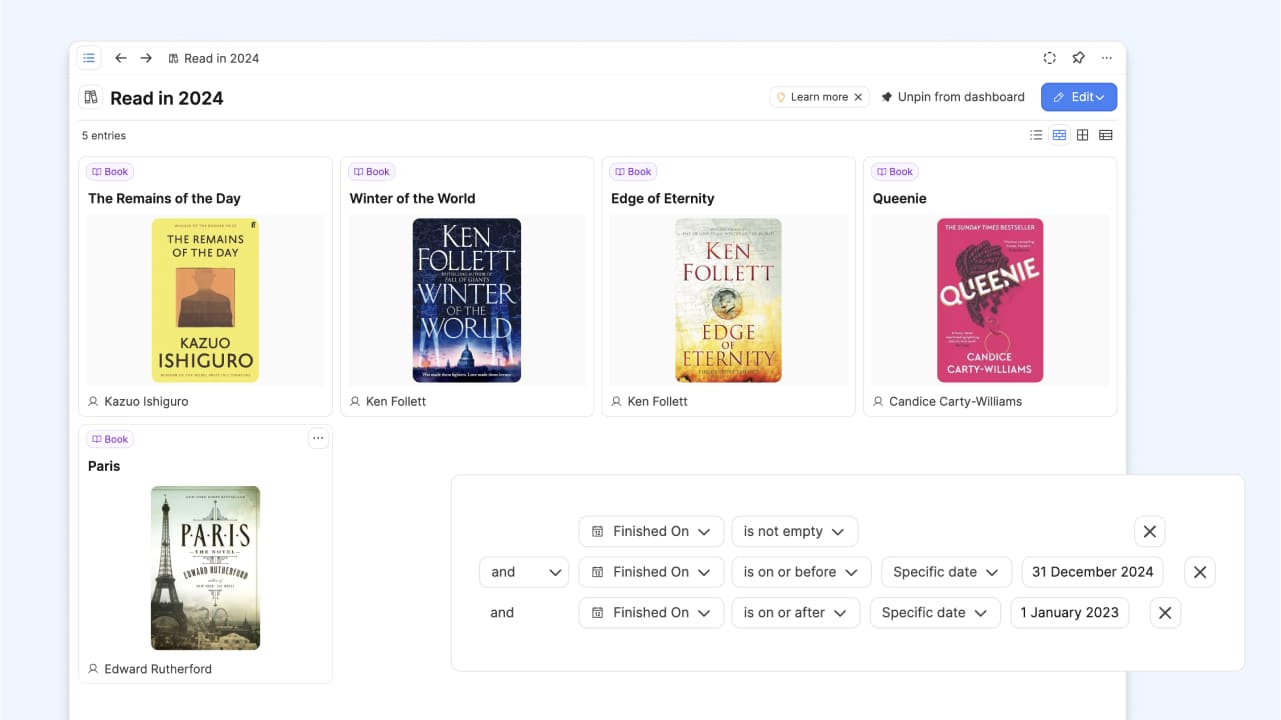
Four Ways to Use Queries in Capacities
Queries let you group content by rules. You can reuse that grouping across your workspace because queries are objects like anything else. You can embed them or reference them pretty much anywhere. Here are a few ideas for how you could use them.
Combining Tags
Tags in Capacities help you stay connected to your notes over time. They link related items across all object types (e.g. quotes, weblinks, books) so you can group content by theme, status, or anything else of your choosing. You can also tag individual blocks. A note on creativity, for example, might be tagged as a whole, but a single paragraph inside it might also be tagged with curiosity or learning if it connects in a specific way.
Each tag has its own page with a visual wall of connected material, making it easy to explore a topic at a glance. Tag pages become entry points for deeper thinking. Instead of starting from scratch, you’re building on a base of collected ideas.
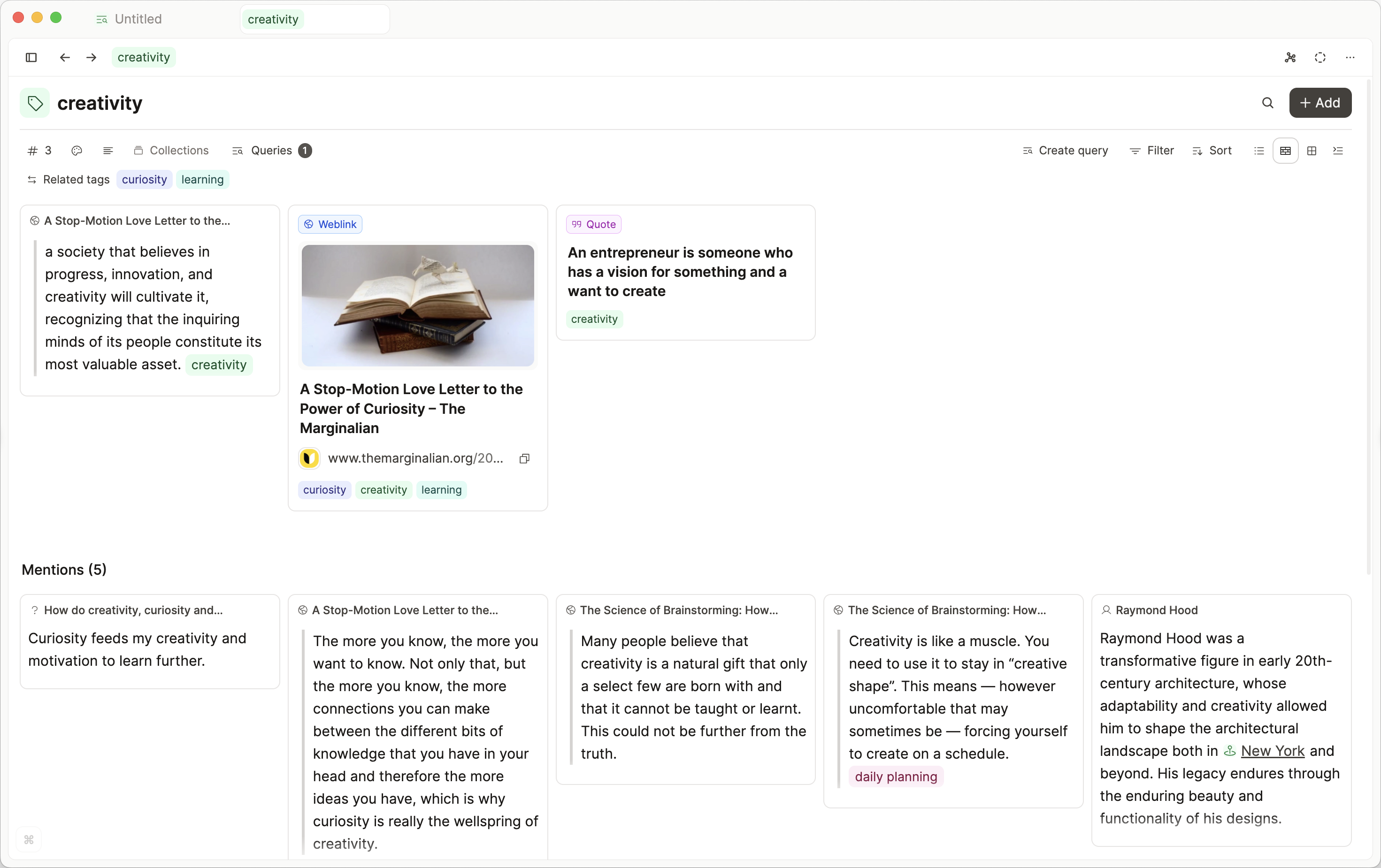
When you want to explore how two themes intersect, that’s where tag queries come in. In any tag page, just add a second tag.
You can save that view, reuse it, and embed it anywhere. It updates automatically as new content is added to either tag.

Try opening a blank page (Shift+click on an object) and pulling in a saved tag query. It gives you momentum when it’s time to think or write. Instead of gathering everything manually, the context is already there.
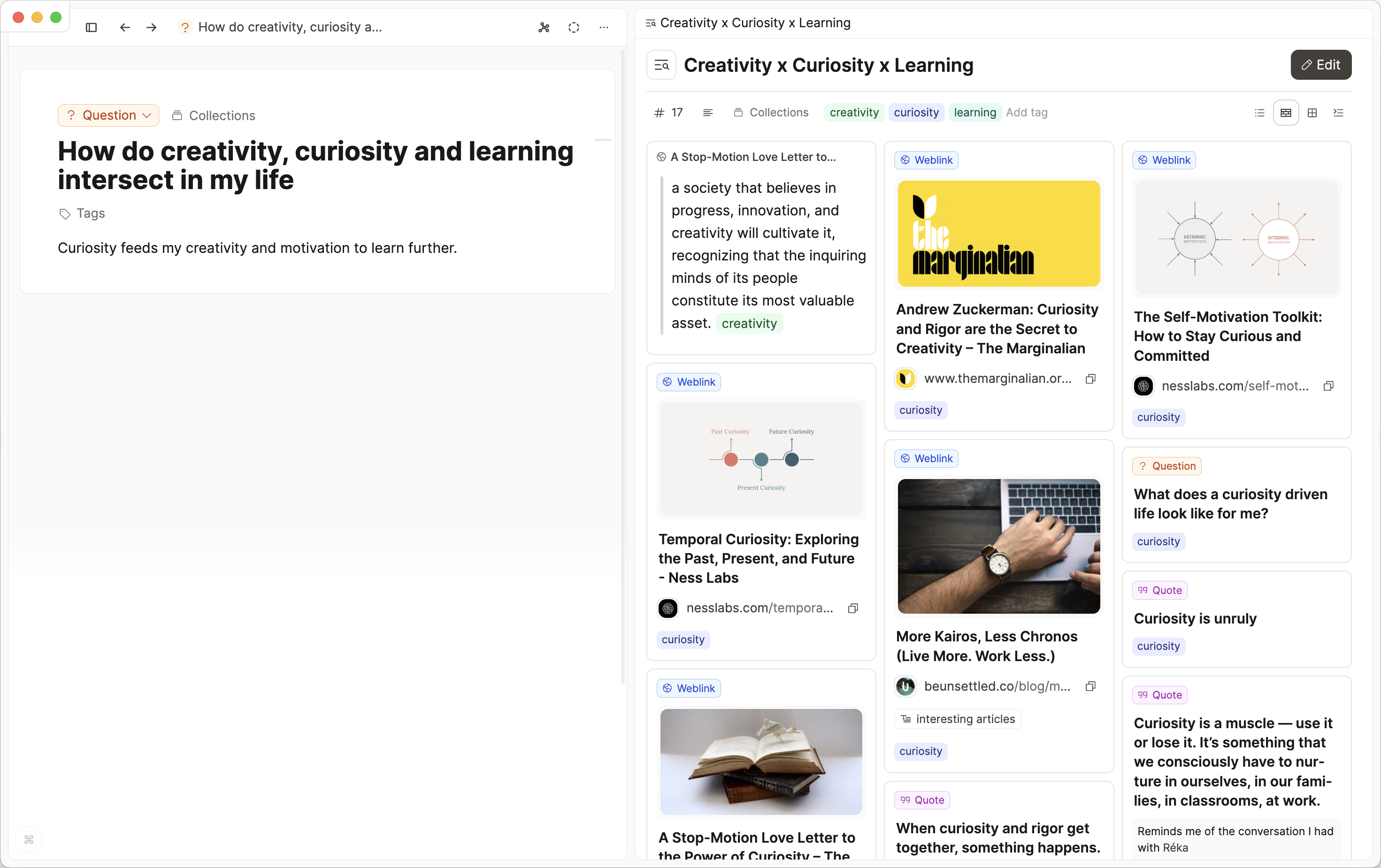
Here’s what the query settings look like:
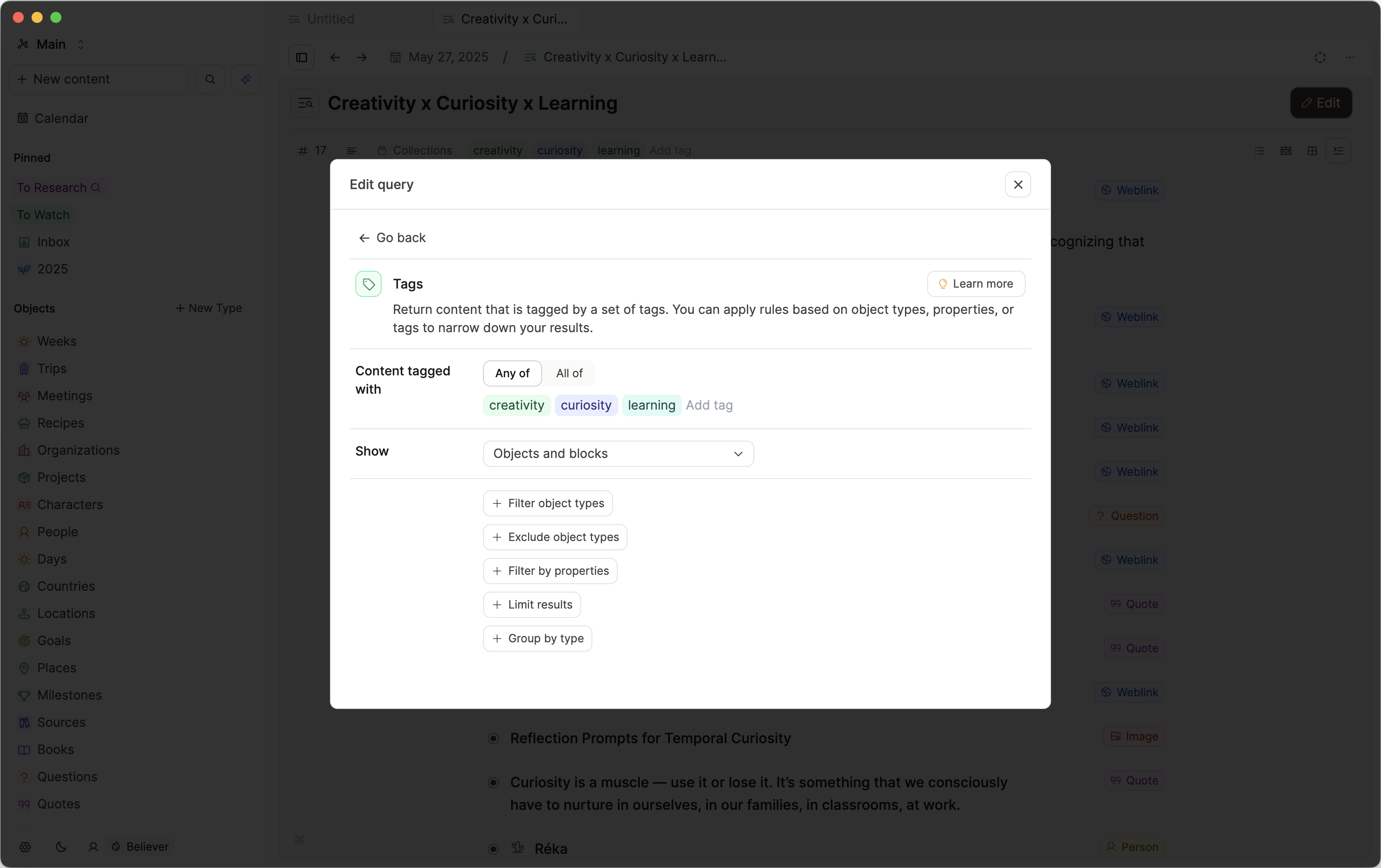
Review Queries
Reviewing your space regularly helps make sure you’re thinking about the right things and queries make that process much easier. They let you define a focused view, then reuse it wherever you like, including in templates.
You can build your own in a few steps:
- Choose the object types you want to review (quotes, questions, milestones, etc.).
- Set date filters to limit the time range. If you always review on sunday, you can use ‘On or after 1 week ago’, or you can manually choose specific dates
- Save the query and embed it into a template.
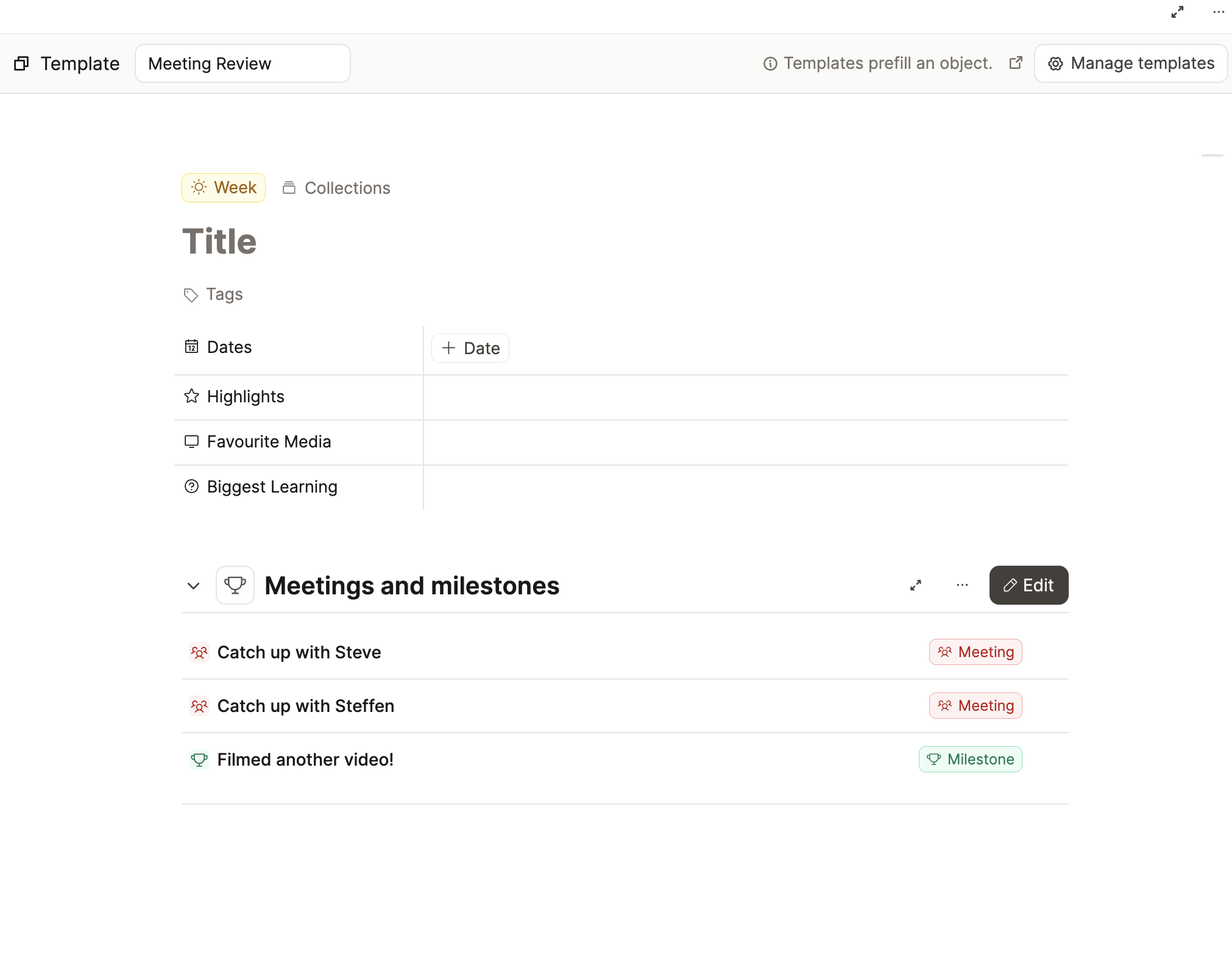
For broader reviews, you don’t need a query at all. Just Shift+click on the calendar button to open it in the sidebar. It gives you a clean overview of everything, all automatically collected for you by Capacities.
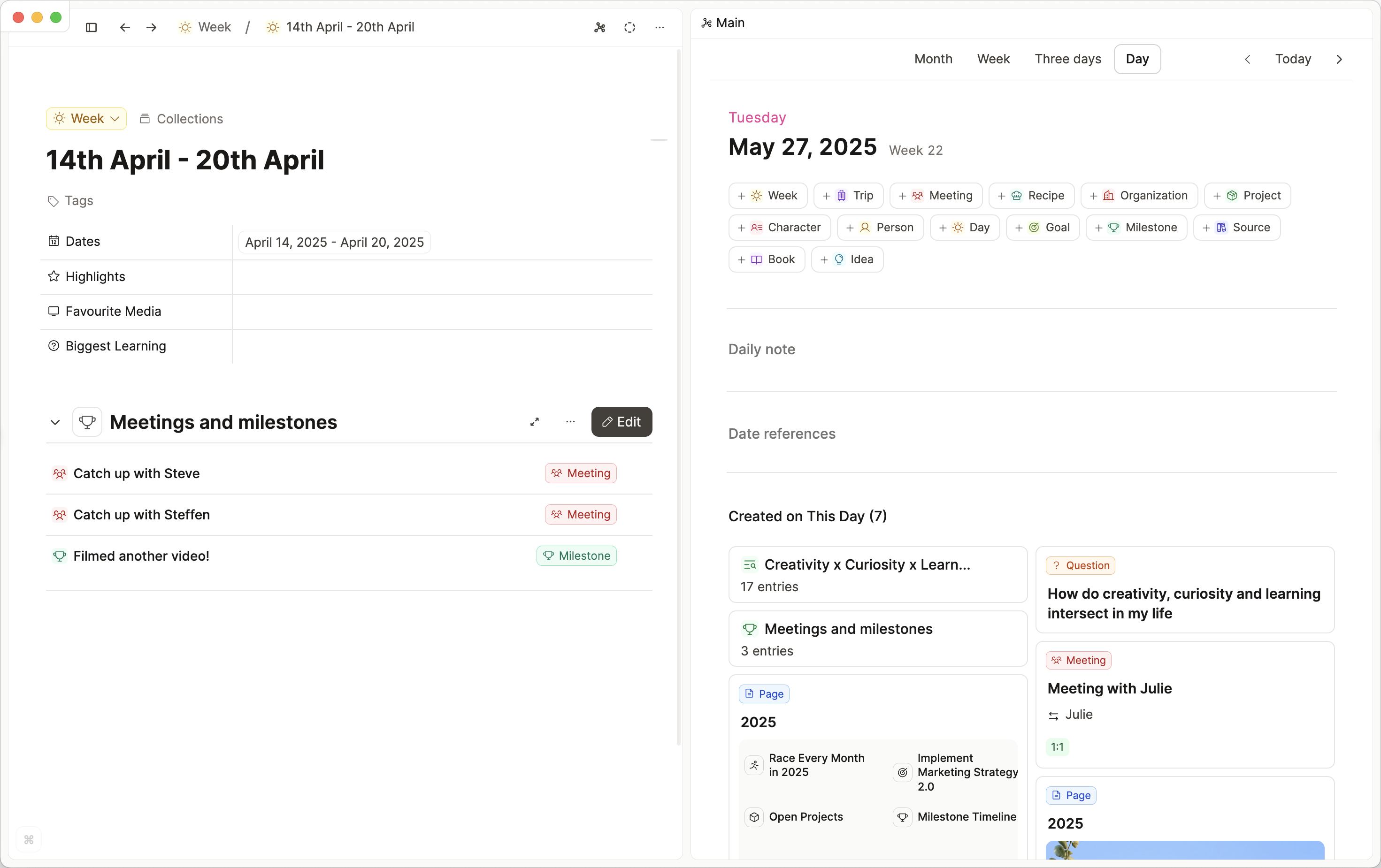
Here’s what the query settings look like for the meetings and milestones query:
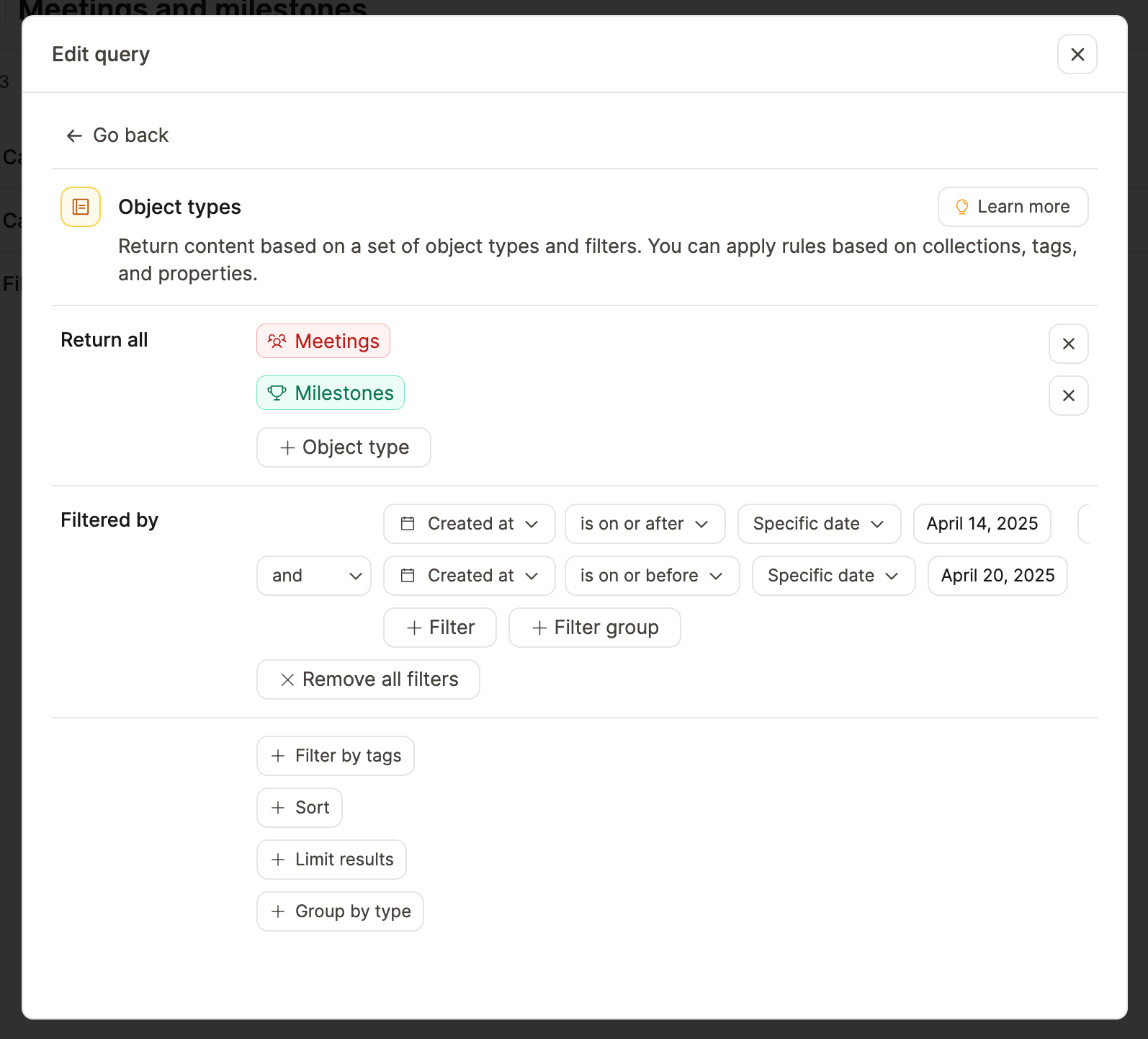
Quick Meeting Notes with a Colleague
On a person’s page, you can embed a query that shows all your 1:1 meetings with them, sorted by newest first. It pulls together every interaction you’ve logged. This context helps you prepare for future conversations and easily continue them.

Better still, if your query is specific enough (e.g. meetings where “People” includes “Julie” and the type is “1:1”), you’ll get a New button. Clicking it starts a fresh note with those properties already filled in. This could be super helpful for your processes if you spend a lot of time in meetings. Think of your people pages as the central hub for all interactions. You’ll have everything you need right there.
Here’s what the query settings look like:
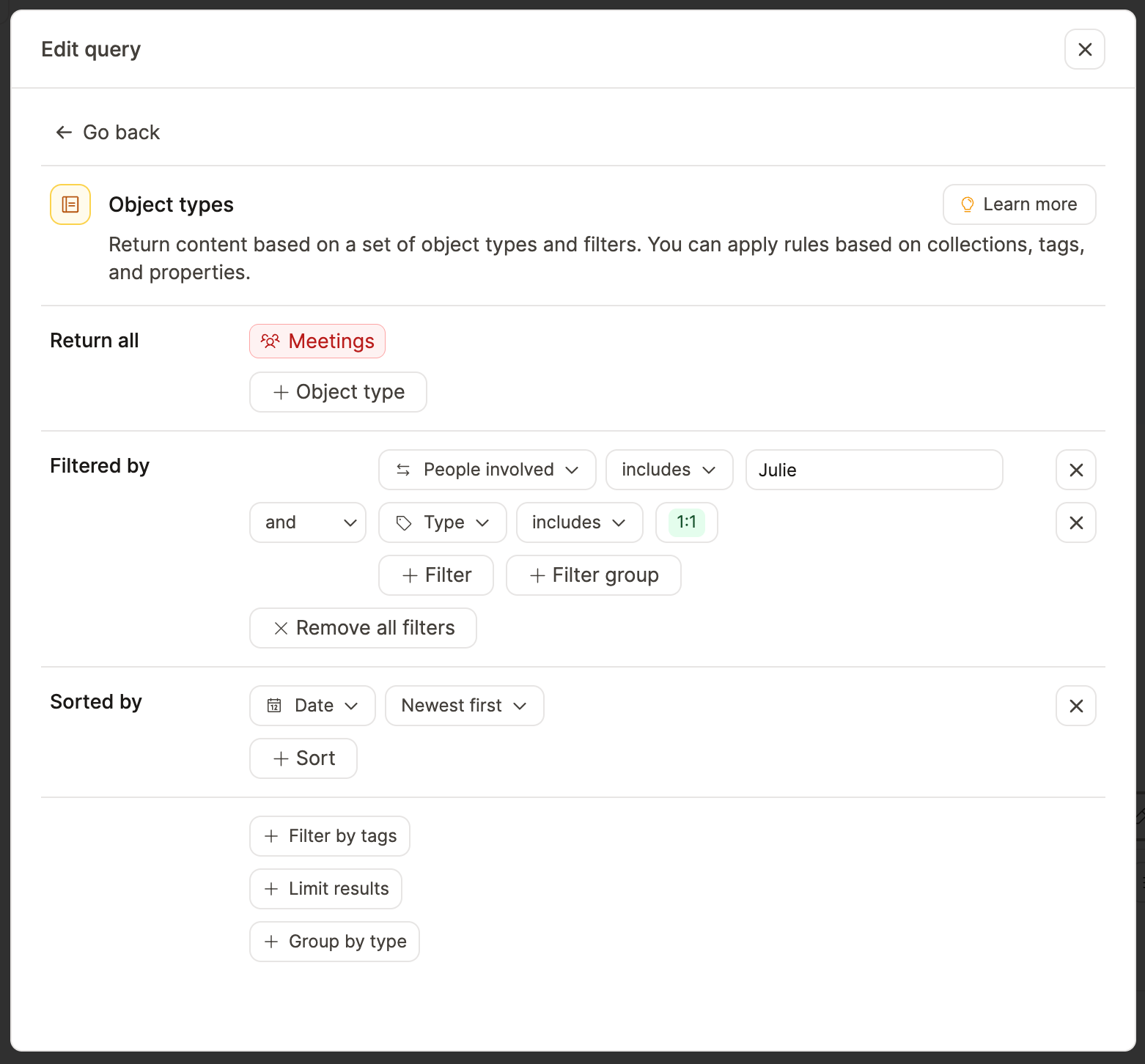
Dashboards
Queries aren’t just for reviews or people. You can also use them to build dashboards.

If you’re interested in building a page like this, watch this video.👇
In this 2025 page, there are a mix of embedded objects
- One query pulls in all open projects (status: in progress).
- Another shows milestones, sorted by date achieved.
- Some quote and goal objects are also linked
This setup gives a kind of “North Star” for the year. You can build your own dashboards for anything, not just yearly planning. Simply embed whichever queries would be useful for you to see at a glance.
Automatic collections
Queries can also be seen as automatic collections. If you want ideas for
👉 an automatic library of the books you’ve read this year
👉 a list of all the meetings associated with a certain project
👉 an automatically updating video watch list.
then head over to this video.👇

